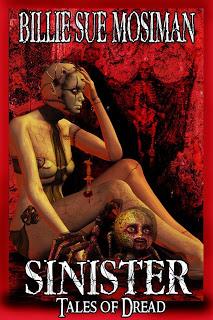This is a chilling and improbable tale of the living dead: Even though they were savaged by the politeness police and left lifeless some 60 years ago, EC comic books, which spawned notorious titles like Tales From the Crypt, Shock SuspenStories and Mad, have become the comics that refused to die.
Just last month,
Fantagraphicsreleased two more albums in its EC Comics Library, started last year, and will soon publish its first volume of illustrator interviews in “The EC Artists.”
Dark Horse Comics has revived the EC Archives, and will continue the series with “Tales From the Crypt: Volume 4,” next month.
IDW Publishing is producing stunning, portfolio-size Artist’s Editions, with work by EC all-stars like Wally Wood, Jack Davis and Harvey Kurtzman (who created Mad magazine) and others. IDW also put out biographies this year of Wood and EC’s indispensable editor-writer-artist, Al Feldstein.
So why, decades after its death, is EC still alive — and even thriving?
Gary Groth, Fantagraphics president and editor of its EC Library, thinks he knows. “The EC line represents a high-water mark in the history of commercial comics,” he wrote in an e-mail. “They were arguably the best commercial comics company in the history of the medium, and their list of artists and writers between 1950 and 1955 represents a Who’s Who of the most accomplished craftsmen working in comics at that time.”
And in an essay
this year, he wrote: “EC came as close as a mainstream comics publisher could to being the comics equivalent of Barney Rosset’s Grove Press. What other comics publisher would even think of adapting stories from The Saturday Evening Post, use stories by Guy de Maupassant or steal from the best — Ray Bradbury?”
The best-selling horror novelist
Joe Hill, who also writes the comics series Locke & Key, has a slightly different take. “Tales From the Crypt was the most famous of the horror and crime comics that were destroyed by the 1950s-era show trial put on by Congressman Estes Kefauver,” Mr. Hill wrote in an e-mail. “And I think that in the very act of making a thing forbidden, you make it seductive. Congressmen and respected psychologists didn’t want you to have it ... therefore it had to be great.”
EC’s pulpy cultural DNA, which pulses in comics like Crypt and Weird Science, has proved hardier than anyone could have imagined. Those gruesome, fantastical and slapstick chromosomes course through the films of Joe Dante and George Lucas, of Steven Spielberg and Quentin Tarantino, and in the novels of Stephen King and Mr. Hill, Mr. King’s son. And don’t forget that Mad was born as a 10-cent EC comic in 1952 before becoming a 25-cent magazine with its 24th issue. (The first 24 issues of Mad can be read in DC Comics’ “Mad Archives,” Volumes 1 to 4.)
“You start with Mad and wind up mainlining Vonnegut and calling yourself a conscientious objector,” wrote Mr. Hill, whose latest novel is “NOS4A2.” “Mad magazine has had its finger up the nose of pop culture since 1952 and has never stopped unearthing fresh glistening gems. Their sense of humor informed National Lampoon, ‘Saturday Night Live,’ ‘Jackass,’ Eminem’s music, one out of every seven tweets on Twitter, and every gross joke in every comic ever.”
EC’s glory (and gory) years were 1950-1955, when it mutated from Educational Comics to Entertaining Comics, stopped printing tame titles like Saddle Romances and Tiny Tot and shifted to Two-Fisted Tales and The Vault of Horror. In this new, skewed world, axes were rarely used to chop wood, and meat grinders weren’t for shredding beef. Buxom bombshells lounged on distant planets, cannibalism was a hobby, and the dead just didn’t know how to stay dead.
for the rest go here:
http://www.nytimes.com/2013/10/27/arts/design/ec-comics-vilified-in-the-
1950s-thrive-60-years-later.html



